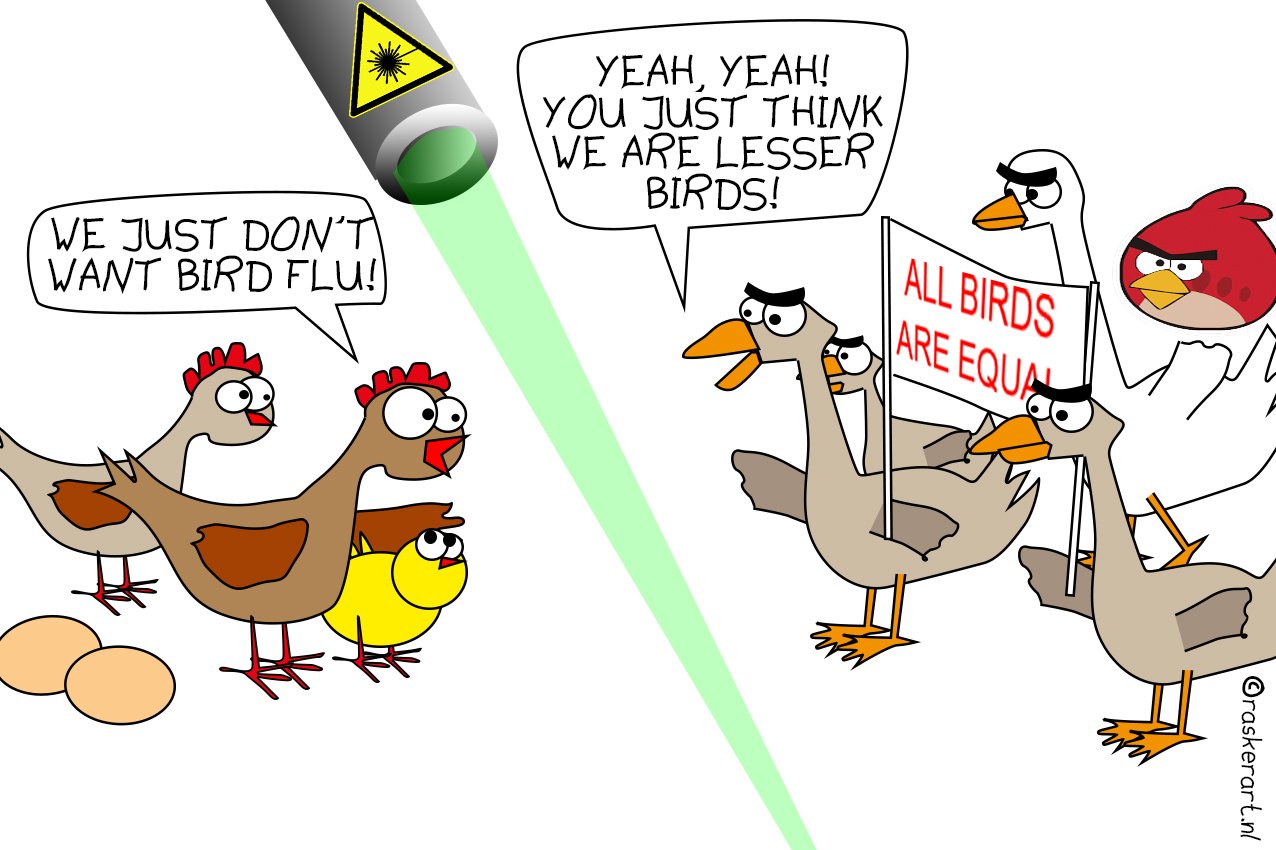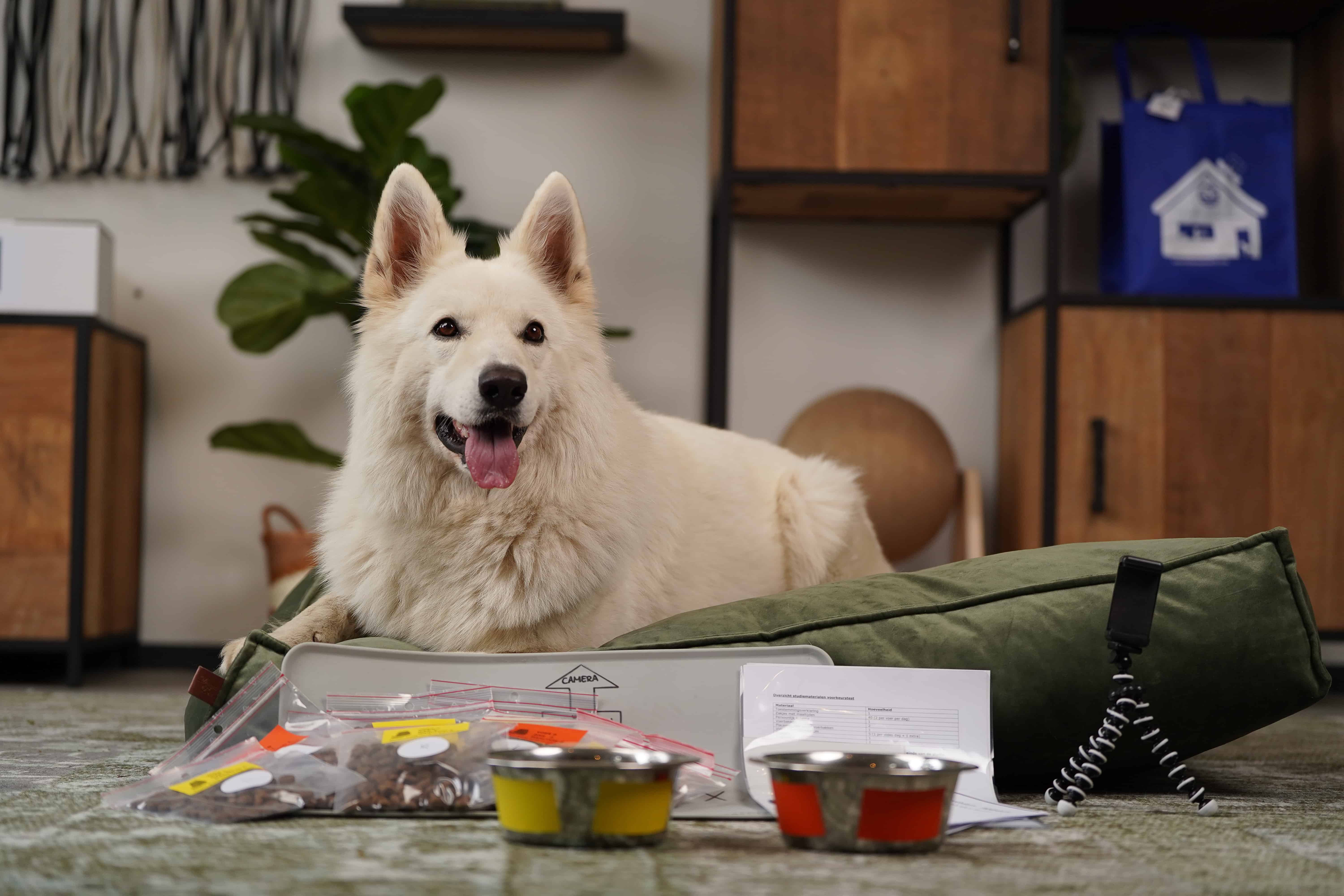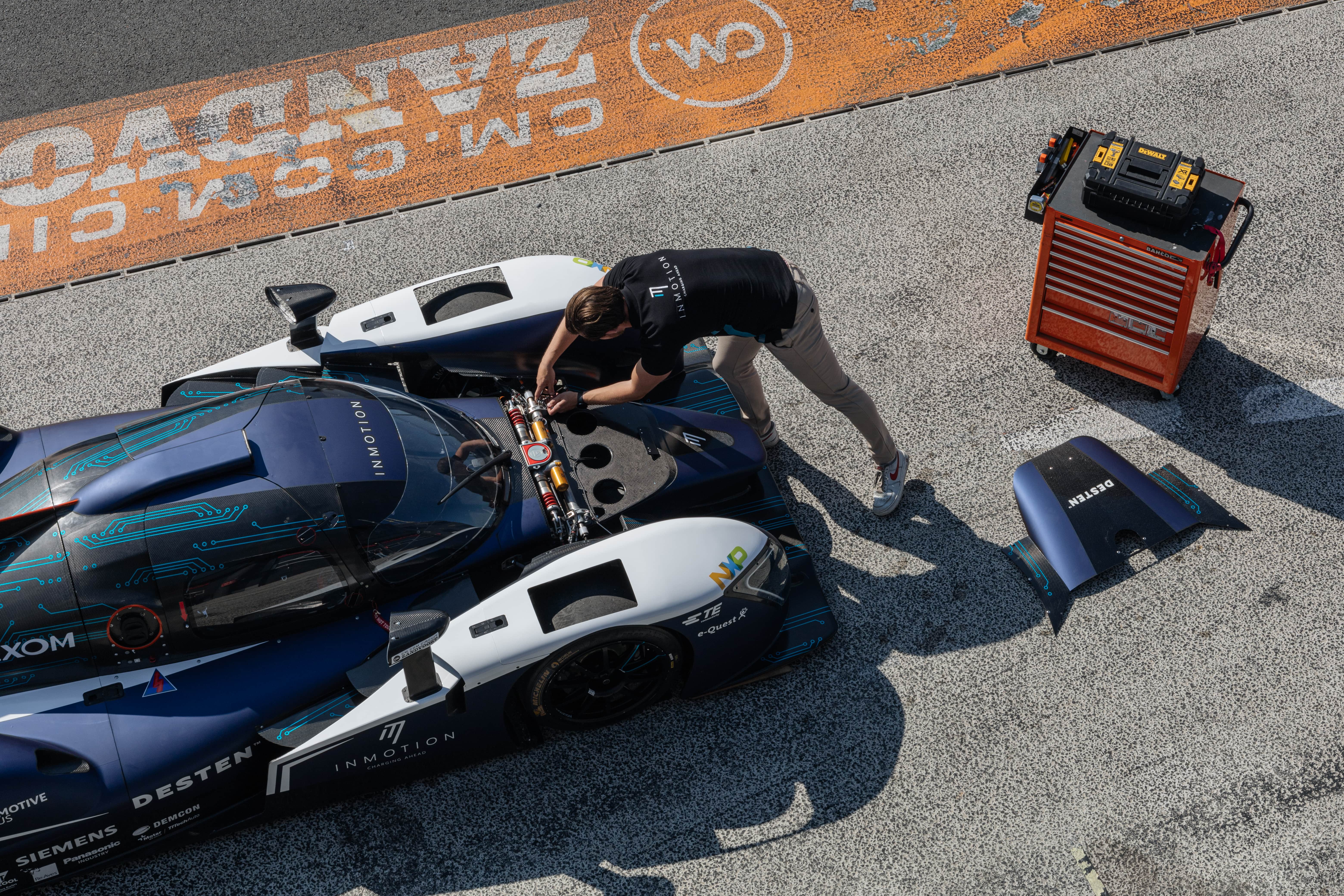
Armin Elbers, epidemiologist at Wageningen Bioveterinary Research (WBVR) in the Netherlands and project leader of the research into the lasers, is self-effacing and says he has just worked on a small piece of the puzzle.
In addition to that research, his work also focuses on figuring out how to spot these kinds of infections as early as possible. “Often, a farmer on these farms will see that there is a disease whenever there is a decline in production. Like a drop in the number of eggs being laid or a drop in feed or water intake. Or if there is a higher than average death rate among animals. If they report this quite late, the virus may have already spread to other farms.” The WBVR is developing systems that make it easier and quicker for people to raise the alarm if something might be going wrong on that farm. “We also collect data during outbreaks of these types of animal diseases to improve preventive measures and programs.”
Scares away wild birds
One such preventive measure is a laser. Attached to a 6-meter high mast, the bright beams lit up the chicken run. Eight cameras monitored the area. The laser in the trial almost completely prevented (99.7%) visits by wild ducks to the run. That’s because the moving laser light startled the birds and they sought refuge elsewhere. In addition, visits by other wild birds to the run between sunrise and 10:00 a.m. were reduced considerably when the laser light was deployed (> 96%).
The laser creates a kind of shield around a poultry farm that fends off wild birds. An effective tool for farms where the risk of infection is high, says Elbers. Bird flu is a contagious avian disease that has many variants. The virus occurs naturally in wild water birds. They transmit it to other animals, including poultry. There is a mild form, called low pathogenic avian influenza (LPAI), and a dangerous form, the highly pathogenic avian influenza (HPAI).
Protrusions
“That low pathogenic one, the mild form, is present in all avian flu viruses,” Elbers explains. LPAI viruses are found in all water birds, such as in our ducks, geese and swans. The highly pathogenic form can occur if an LPAI virus has either the H5 or H7 subtype, the researcher points out. So-called glycoproteins characterize the influenza virus. Heamaglutinin is a glycoprotein. These stick out like spikes on the surface of the virus. There are nearly 20 different heamaglutinin (H) protrusions in the avian influenza virus. “The 2003 avian flu epidemic among domestic poultry was caused by an an LPAI subtype H7 virus that mutated into an HPAI subtype H7 virus in poultry.”
In that year, one-third of the Netherlands’ total poultry population was slaughtered to stop it spreading. The direct damage, according to the NVP branch organisation for poultry farmers, totalled €300 million. “The indirect damage was many times more than that.” Since 2003, poultry farmers have been raising the alarm straight away if they have an infection of the milder variant or when an avian flu virus infection is suspected so as to prevent things from getting worse.
Southeast Asia
However, there was a turnaround in 2014. Bird flu infections of chickens, domestic ducks and turkeys in the Netherlands occurred without the LPAI virus mutating into the HPAI virus, Elbers goes on to explain. Large-scale culling had to be carried out again. “Water birds flying over primarily from bird flu infection areas in Southeast Asia appeared to be the cause. Over there, when there is highly pathogenic avian influenza in domestic poultry, an immediate cull isn’t done, like we do here. Wild water birds, which scavenge for food and water around infected poultry, subsequently become infected.”
In any event, people and animals live much closer together in Southeast Asia than they do here. There, the culture is to buy live animals at markets, Elbers adds, “because they then want to make sure that an animal is not sick or contaminated with all kinds of pathogens before it is thrown into the pan.” This has probably also been the problem with the current corona infections, and has been the case with a lot of other epidemics too, such as SARS. People who visit these markets can become infected there. In addition, the animals that don’t get sold are taken home again. With the chance that when they get back home, they will infect even more animals all over again.”
The Eurasian wigeon
The chances of an avian flu virus transferring from infected poultry to water birds are quite high in Southeast Asia, Elbers says. “Water birds don’t get as sick from it as chickens do. However, those water birds do take the virus to their breeding grounds.” Those breeding grounds are mainly in Siberia. “In those areas, other species of wild water birds also visit. Like the Eurasion wigeon.”
Wigeons can also become infected on shared breeding grounds in Siberia via wild water birds infected with the HPAI virus. This can happen through direct contact with infected birds or by drinking water contaminated by the faeces of the infected birds. “To escape the oncoming cold, infected wigeons then fly to Northern Europe after the breeding season. Not all wigeons will die from it. Wigeons make their way to the Netherlands depending on the weather conditions. They can be found in ditches, canals and lakes here along with our wild ducks, geese and swans. If these animals drink water, from one of these ditches, for example, then they can become infected that way.”
Monitoring
The Netherlands has been monitoring all poultry farms for the prevalence of the bird flu virus since 2004. “Thanks to our monitoring systems, we have a good idea of where bird flu is more commonplace. As a province, you can take that into account, for instance, in the zoning location for a new company.” The laser is then a solution for existing businesses in those bird flu risk areas. “So, you don’t have to install this kind of laser on all poultry farms. Not all poultry farms in the Netherlands are at risk. The majority of farms never have problems with bird flu.”
The poultry industry has hygiene protocols in place for what to do to preempt an infection. Companies try to work as hygienically as possible and have a safety plan. “So, if there is a signal already in the summer, from Mongolia or Russia for example, of large numbers of dead infected birds on their trek to the Siberian breeding grounds, we are then forewarned in the Netherlands. If we then also get reports of dead infected birds in Germany, then we will consider keeping free-range birds indoors.” Yet in spite of these types of measures, poultry still gets infected, Elbers admits.
Unclear how it happens
“We don’t know why that happens. There may be a human factor to it. Employees or visitors can get the feces from wild birds on their shoes and unwittingly walk into a chicken coop with it.” Elbers envisions a future that uses a hygiene sluice as a separation between a potentially-infected environment and the clean non-infected poultry barn. “And that alarm bells then go off when you walk through that sluice with the clothes and footwear you walked around in outdoors.”
But rodents like rats and mice with faeces from infected birds stuck to their fur or paws could also bring the virus into the barn. “Whenever they look for food and warmth in the winter,” he says.
The laser is an important innovation amidst everything that is still unclear. This is also the opinion of Joke van der Giessen, a veterinary microbiologist and researcher on zoonoses at the Dutch National Institute for Public Health and the Environment (RIVM). Bird flu is an animal disease that can also spread to humans, a so-called zoonosis. Among other things, RIVM works with the WBVR for the identification and control of these strains. “The WBVR is the reference laboratory for notifiable and controllable service diseases, such as bird flu for poultry.”
Zoonosis
“Zoonoses are currently under the spotlight because of the corona outbreak, We do not want another pandemic like that. To do that, it is important that medical practitioners and veterinarians, but also knowledge institutes, work together to identify and contain new potential zoonotic pathogens in animals at an early stage. A zoonosis concerns both animals and humans, but also an entire ecosystem and how we all live together.”
Many things have been laid down in playbooks and protocols in the fight against bird flu. Yet bird flu has its origins in wild birds. That’s why Van der Giessen thinks lasers stand out so much as far as innovation is concerned. “The fact that those lasers would prevent wild birds from interacting with poultry really is a very good development.”
Whether it will do anything to help in the fight against the corona pandemic is an entirely different matter. “Contamination from animal to human has already happened in this case. It has now become a human-to-human contagion. Using lasers now wouldn’t make much sense. The lasers scare away birds that fly, but how does it affect other animals that mover over ground?”
As to whether the laser works against other animals, Elbers is not sure; that wasn’t part of the study. He does know that it doesn’t work on cats and foxes, among other animals. “And not on swans either, they are simply too big and not afraid of the laser.”
Elbers can imagine that companies which have been infected in the past or are located in high-risk areas will purchase the laser. Which entails an investment of about €10,000, not including the cost of a mast to mount the laser on. “That will then be a major step in the prevention of bird flu,” he said.







